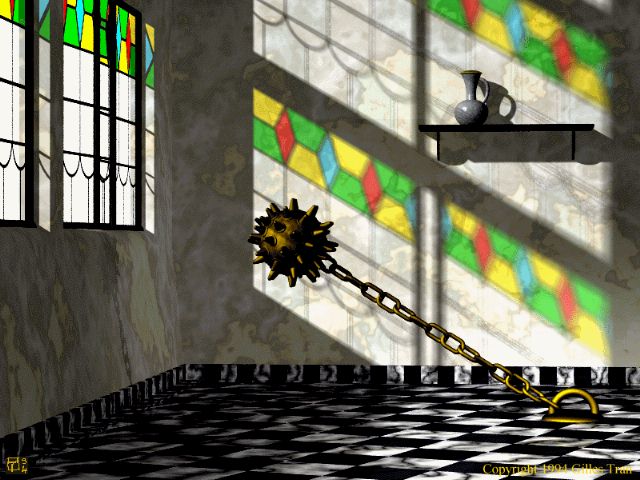

In the last days of the war, Jaap Van Hoogstraten bought this outdated spiked flail from a routed Spaniard for the handsome price of four guilders. The Spaniard was more than happy to be relieved of this cumbersome heritage coming from his great-great-grandfather. When Jaap resumed his office as the chairman of the Armourers' Guild of Delft, he proudly put the flail on display in the drawing room, to be admired by the friends, colleagues or customers he wished to entertain. The weapon was one sombre spherical piece of dented bronze, inlaid with dark red patterns of ancient barbarism. Famous artists called on Jaap every week to see and touch it. Trintge, however, kept admonishing him ; the flail, she said, disturbed the proper order of the household. Two maidservants had already fled, without any reasonable motive, since her husband had had this thing fixed onto the ground, and God alone knew what follies they would tell at their new residences. Jaap would not yield to his second wife, or acknowledge the local hearsay about the Spanish oddity. He was confident in the judgement of his peers and customers. On the twelfth day of October of 1654, the Powder Magazines of Delft blew up. Jaap had to hurry back from a business trip to Utrecht, so he could keep up his position in these tragic hours. He found the city of Delft weeping under black veils of wet ashes. Several of his friends had been killed in the blast. His business trip had saved him. As an act of contrition, he went out to offer his condolences to all the families of the victims. To his own surprise, they would not let him in. The third time he was forbidden to cross the threshold, Jaap started to grasp painfully the truth in the hearsay his wife and servants had been mumbling in the shadows of his house. Jaap had nothing to